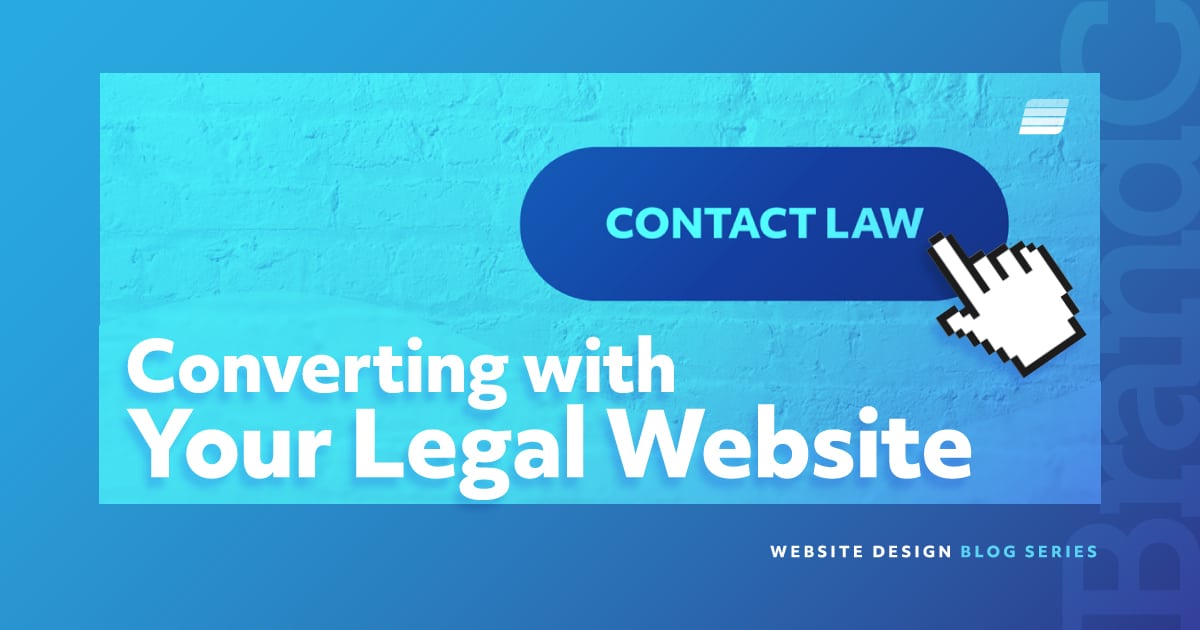Building Your Law Firm Website for Performance
January 5, 2021

Consumer habits are changing so rapidly that your law firm website can easily be outdated in a matter of 2-3 years. Additionally, even recent designs can leave a bit to be desired for today’s users.
Only in the last 25 years did businesses began using their website to attract clients. In today’s markets the competition is as heated as ever. And it’s still heating up. Let’s take a look at how to stay a strong player in the game when it comes to your law firm’s website.
Five features high-performing law firm websites share
Meeting the goal of building a law firm website for performance requires an engaging , easy-to-follow site that capture’s users interests. To ensure your legal website stands out from the competition here are 5 common features to include.
#1: Unique and Branded Content
Today’s consumer is research driven. They will research most of their decisions online, including which attorney they should hire. If your potential client visits your website and reads the same boring content as every other website on their list, guess what – no consult for you. In fact, most visitors to your site decide in a matter of a few seconds if they leave (bounce) or stay.
It’s just not good enough to “be” online. You have to be different and tell your unique story. Some ways you could do this are to highlight:
- how your locations benefit your clients
- how certain clients have benefited from your focus on an area of law
- be personable and share some of your life experience
- content that explains why your process is different
- why your intake is different
- why you have success with certain cases
When writing content for your law firm website resist the temptation to talk about yourself as the reason, they are making a good decision in hiring your firm. Instead, talk about how they will feel choosing to hire your firm. It’s all about the client.
#2: Invest in good responsive design
The chances that your consumer is researching you using their phone are high. We see most of our law clients with over 50% and up to 75% mobile users. Make sure their experience is great, not just acceptable.
Building a responsive website is the bare minimum requirement when it comes to attracting clients. To begin with, responsive websites receive a higher search ranking because Google prioritizes sites that offer a better user experience. What this means is that law firms with responsive websites are more likely to connect with their target clients because they will inherently increase the visibility of their website.
If you are not sure what a responsive website is, check out this article on your mobile device. Essentially your content adapts to whatever screen size the user device is. This is important especially since mobile usage is now the norm and not the minority. Our clients see mobile users wanting to book consults right on their phones at all times of the day. The last thing that firms want to do is make it difficult for visitors to perform these types of actions due to poor design.
#3: Treat every page like a landing page
Not all visitors to your law firm site enter via the homepage of your site. And if they don’t enter via the homepage that is a good thing. It means they found very relevant content on another page of your site. Having a full breadth of content and well-organized pages helps with search rankings.
Another thing to consider when building your website is the ease of navigation. Unfortunately, many firms miss the mark when it comes to creating a simple website, and they pay for it with an increased bounce rate.
While you may want to pack as much information as you can to help your visitors, this can overwhelm them. What’s even worse is that visitors are less likely to discover the most important aspects of your website if it’s too cluttered.
Websites with simple navigation mean that visitors don’t have to waste too much time trying to find information that is useful to them. At the same time, law firms can rely on the simplicity of their site to guide visitors to the information they want them to see. For instance, it’s a lot more difficult to get visitors to sign up for your email listing when they have to go through several pages to get to it.
A site with simple navigation will have a clean menu structure with an increased ability to navigate between pages more effectively. This allows visitors to find the content they need, which increases the relevance of your website, improves SEO, and decreases your bounce rate.
#4: Design for calls to action
With any website, it’s always important to consider what is serving a greater purpose and what is taking up space. If it doesn’t have a purpose, it’s just clutter, and this certainly doesn’t win clients. A cluttered website not only takes away from the user experience, but it communicates that your firm is disorganized and unprofessional.
On the other hand, a clear, organized website says that your firm is an industry leader, professional, and cares about the experience visitors have on your site.
With that said, take inventory of what design features add value to your website and which don’t have a purpose. You’ll more than likely find a few features that your website can do without. For instance, design features such as flash animations, carousel images, and interstitial ads may be distracting on your website and not suited for law firms.
Removing design features like these gives your website a clean layout and can be more impactful when it comes to attracting clients.
#5: Content is king, but headlines convert
Many law firms offer multiple services. As such, it’s common to want to pack in as much information as possible to ensure visitors have a full understanding of what your firm offers.
While it’s important to highlight this kind of information, it’s equally important to monitor the length of your web pages. Ultimately, you want to avoid giving your visitors the feeling of the endless scroll, and you don’t want to overwhelm your visitors to the point that they’re not sure what they’re looking at.
Keeping the length of your web pages to a minimum allows visitors to consume your content much easier, which is more beneficial when it comes to communicating information to them. Consider making a list of the most valuable information and prioritize that on your web pages. This way, your website will be straight to the point, relevant, and useful to your visitors.
Build Your Legal Practice on a Website Designed to Perform
In Summary. To make your website perform you must be great at:
- What you say: You must have unique content branded just for your firm. If you don’t know how you are different, you have a brand problem. Be clear and concise and share the unique brand with your visitors.
- The Technical and Creative Design: It’s not good enough just to have a responsive design that works on multiple device sizes. It’s now just as important to stand out with clean and functional design
- Every Page is a Landing Page: Don’t assume your visitors are landing on your homepage. Each page must have a call-to-action and great design
- Clear call-to-action: Make sure you guide your visitors to take an action. Have them download material, book a consult, signup for your blog or call. Guide them.
- Use headings to draw your users in: Invest in a great copywriter to draw potential clients into the content. You need an emotional connection.
Your website is a digital representation of your law firm. For this reason, firms must spend time building a professional website that can effectively attract clients. Here at BrandCraft, we can help you distinguish your law firm, contact us for a free consultation to get started.





